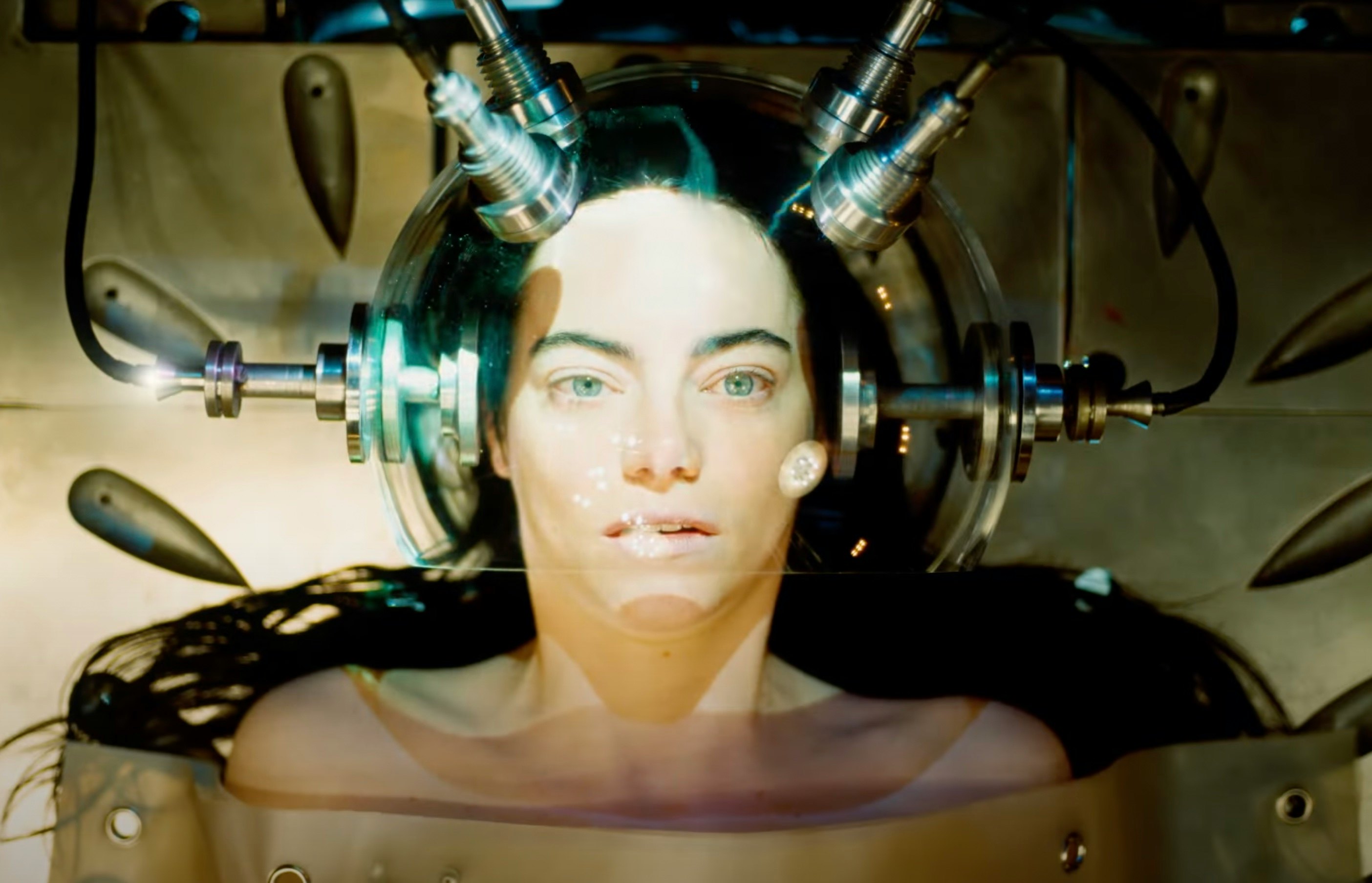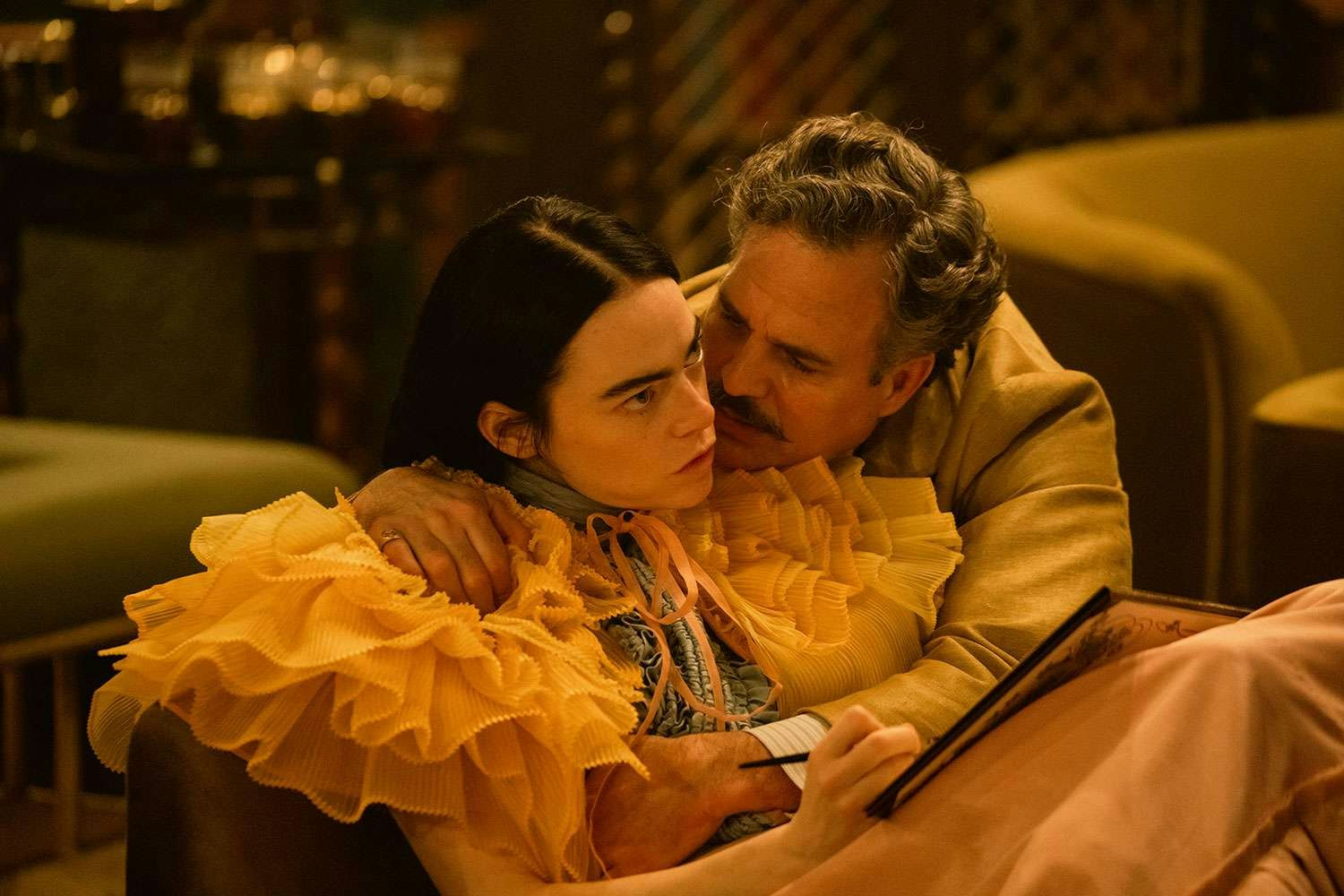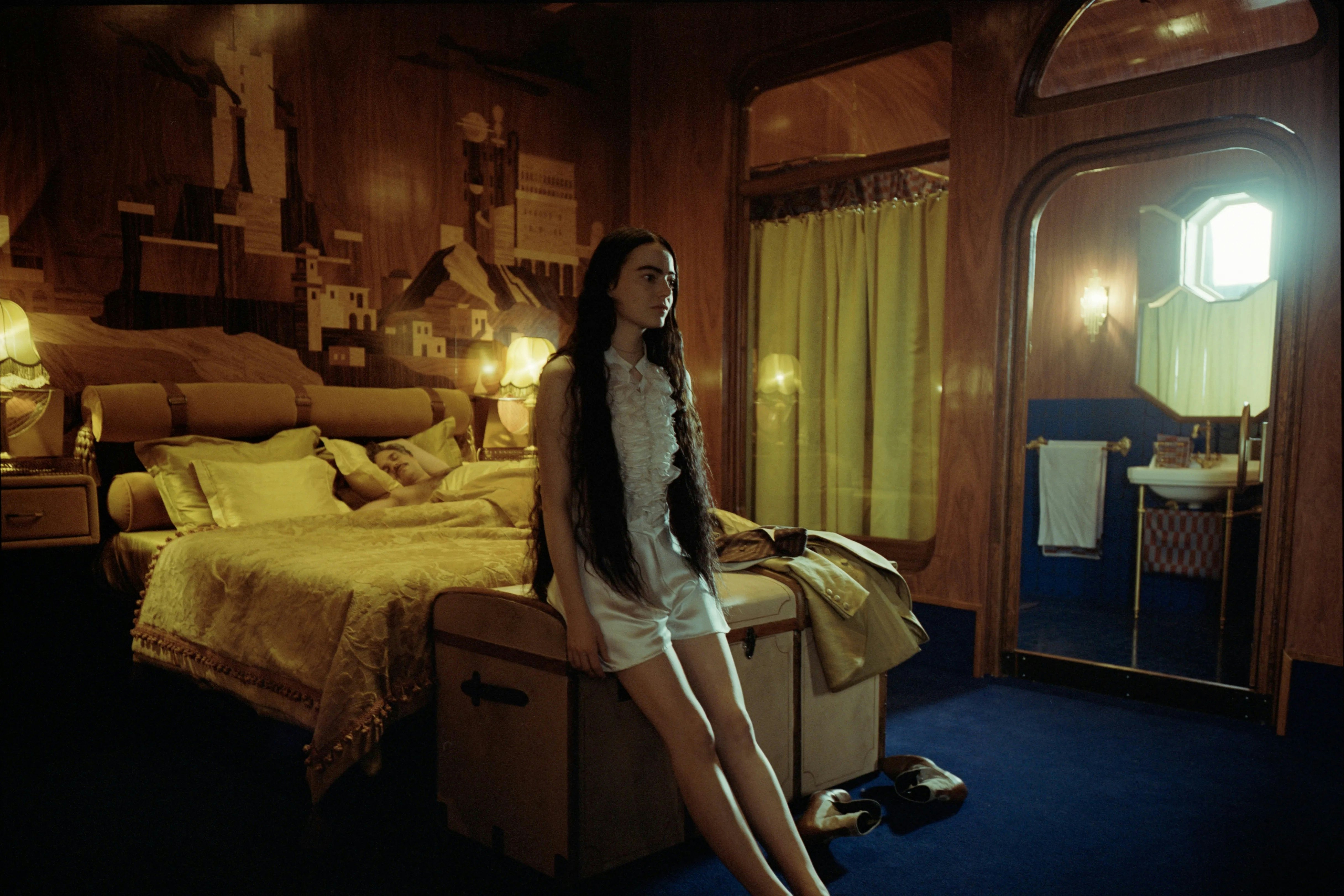
Yorgos Lanthimos and his Poor Things screenwriter Tony McNamara didn’t set out to make a feminist Frankenstein. But in adapting Alasdair Gray’s story of a reanimated woman who embarks on a sexual odyssey across 19th-century Europe, it ended up that way.
“In our approach, we never went, ‘It’s a feminist movie, that’s what we’re making,’” McNamara tells Inverse. “We were just like, we’re making a movie about this woman and the control everyone tries to have over her.”
In Poor Things, every man who meets Bella Baxter (Emma Stone) wants to trap her. Whether it’s for the sake of science, as her creator Dr. Godwin Baxter (Willem Dafoe) claims, or for her safety, as the lovelorn Max McCandles (Ramy Youssef) argues, or out of jealousy like in the case of her hedonistic lover Duncan Wedderburn (Mark Ruffalo), Bella becomes the object of fascination to every man she meets. In Gray’s 1992 novel, the story is told through the eyes and letters of the men who become obsessed with Bella. But McNamara, who was handed the book by Lanthimos before they’d finished work on their first feature collaboration The Favourite, realized the most interesting journey was Bella’s.

“We couldn’t be that faithful to the book, because the book’s about Scottish nationalism and these men,” McNamara says. “You were told things happened. Like she’s in Lisbon, and Duncan has a letter where he tells you a little bit about what happens. But then most of it, we were kind of like, well, what’s her story?”
Bella’s story becomes one of both sexual and intellectual liberation, in a newfangled, more optimistic riff on Frankenstein. Bella develops at a rapid pace, at first delighting at exploring her sexual promiscuity with Duncan before discovering that intellectual stimulation is just as exciting. She becomes articulate, scientifically-minded, and even dabbles in socialism. And over her journey through a heightened, fantastical version of Europe, she’s exposed to the abject cruelties of humanity, only to come out with a surprisingly optimistic view.
It’s a fascinating inversion of Mary Shelley’s original story, which sees Frankenstein’s monster becoming a cruel, hopeless (though equally erudite) creature after being exposed to the dregs of humanity. But while McNamara knew the “Frankenstein element was the premise we knew we would preserve” from the book, he and Lanthimos were careful about making Poor Things too close of a parallel to the classic.
“We didn’t want to get caught in the weeds of ‘It’s a Frankenstein story,’ other than the reanimation bit,” McNamara says. “Yorgos wanted to pay homage to that [visually, in] how you reanimate someone.”

But other than the classic reanimation scene — in which Godwin brings Bella back to life via electric current — Poor Things bears little visual resemblance to past adaptations of Frankenstein. In fact, with its decadent, maximalist visuals and bright, oversaturated colors, it has more in common with Bram Stoker’s Dracula, the sumptuous 1992 film by Francis Ford Coppola, a movie Poor Things cinematographer Robbie Ryan cites as a major influence on Lanthimos’ film.
“What [Bram Stoker’s Dracula] did, which Yorgos was kind of keen on with our film, was to incorporate a lot of older film techniques,” Ryan tells Inverse. “Coppola took a lot of the ’30s aesthetic and the ’40s, even the silent aesthetic of filmmaking.”
This combination of new and old technology makes Poor Things look unlike any other modern film. Older camera techniques were used against LED backdrops, lending the film a surreal, otherworldly air. “We never really used green screen, which is what would be the normal sort of way of doing visual effects these days,” Ryan says.

The result is one of the most unique movies of the year: one that looks unlike any other, and that transcends the classic horror story that gave Poor Things life. To McNamara, it’s more than just a “feminist Frankenstein.” It’s an innately human story, albeit one cranked up to 11. “The way I approached it, and the way [Yorgos] approaches characters, is they’re human beings,” McNamara says. “This young woman is trying to create herself as she lives in the world.”







